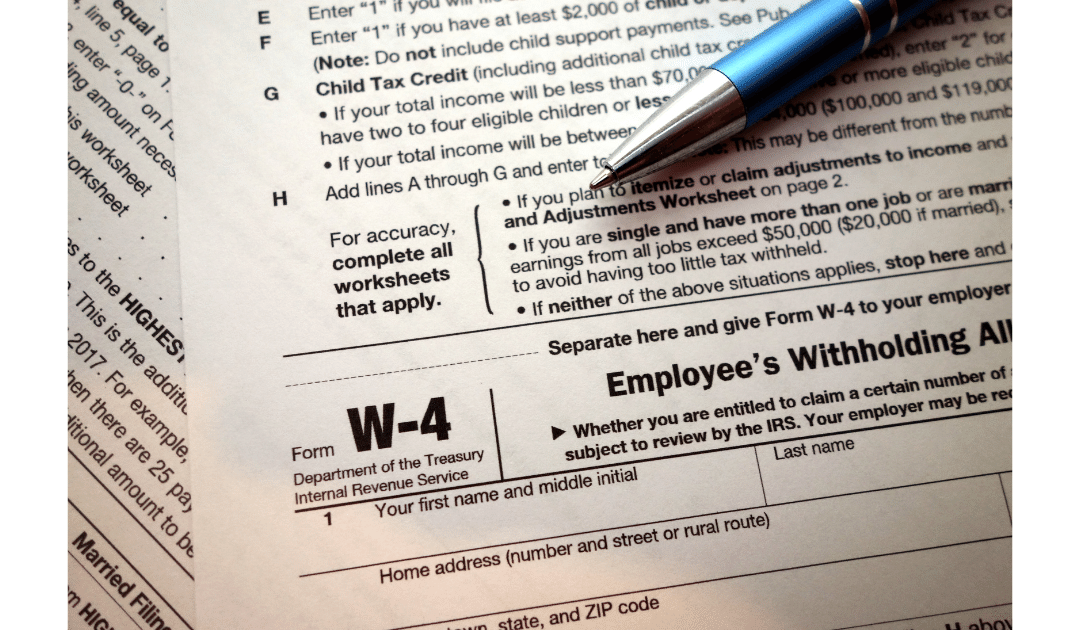By Charlestien Harris
You may not be aware, but the IRS Form W-4 has changed. A W-4 form provides information to your employer so that they can determine how much to withhold from your paychecks. This will ensure that the IRS collects federal income tax from you in an efficient manner. Keep reading to learn how the new IRS Form W-4 changes the way your tax withholding is calculated.
So, what exactly does the W-4 tell the employer about you?
Form W-4 tells the employer, the employee’s filing status, multiple jobs adjustments, amount of credits, amount of other income, amount of deductions, and any additional amount to withhold from each paycheck to use to compute the amount of federal income tax to deduct and withhold from the employee’s pay.
How does the withholding allowance affect your taxes?
A withholding allowance was a number that your employer used to determine how much Federal and state income tax to withhold from your paycheck. The more allowances you claimed on your Form W-4, the less income tax would be withheld from each paycheck.
Why did the IRS make changes to the W-4 form?
Depending on your circumstance, you might have under-withheld and owed money, or over-withheld and received a larger refund than usual when you filed your taxes. In 2020, the W-4 form changed to help individuals withhold federal income tax more accurately from their paychecks. Ideally, form W-4 should make it so you neither owe taxes nor get a refund when you file your tax return.
The Tax Cuts and Jobs Act (TCJA) became law in late 2017 and significantly changed how the federal income tax system works. The TCJA made several changes, including removing personal exemptions and increasing the standard deduction. However, the new tax changes didn’t always work well with the previous version of Form W-4.
The older version of the form relied on calculating the number of allowances that were then used, along with any additional withholding amount desired to figure out how much federal income tax to withhold from your paycheck. The allowance system was tied to the use of exemptions and deductions on your tax return. When these exemptions deductions were removed in the Tax Cuts and Jobs Act, the Form W-4 didn’t estimate the correct amount that needed to be withheld from paychecks as well as it used to.
In order for the IRS to comply with the new law, they had to change the withholding tables first. Employers use these tables along with the information on your Form W-4 to calculate federal income tax withholding.
How has the actual W-4 form changed?
The 2020 Form W-4 is now a full page instead of a half page, and yet it’s still easier to understand. For starters, a lot of the basics have stayed the same. You will still have to provide your name, address, filing status and Social Security number. As with the prior version of the form, the new W-4 allows you to claim exempt status if you meet certain requirements.
In 2019 and years prior, Form W-4 only required you to input: the number of allowances you were claiming and any additional amount you wanted to be withheld from your paycheck. To calculate the number of allowances, you would use separate worksheets that many found complicated.
In 2020, Form W-4 is a bit easier to understand because each section shows why adjustments are being made. There are now three main sections used to help determine your withholding. You only complete each section if it applies to your situation.
For more information about the new W-4 form you can visit the IRS website: www.irs.gov/forms-instructions. Until next week, stay financially fit!

